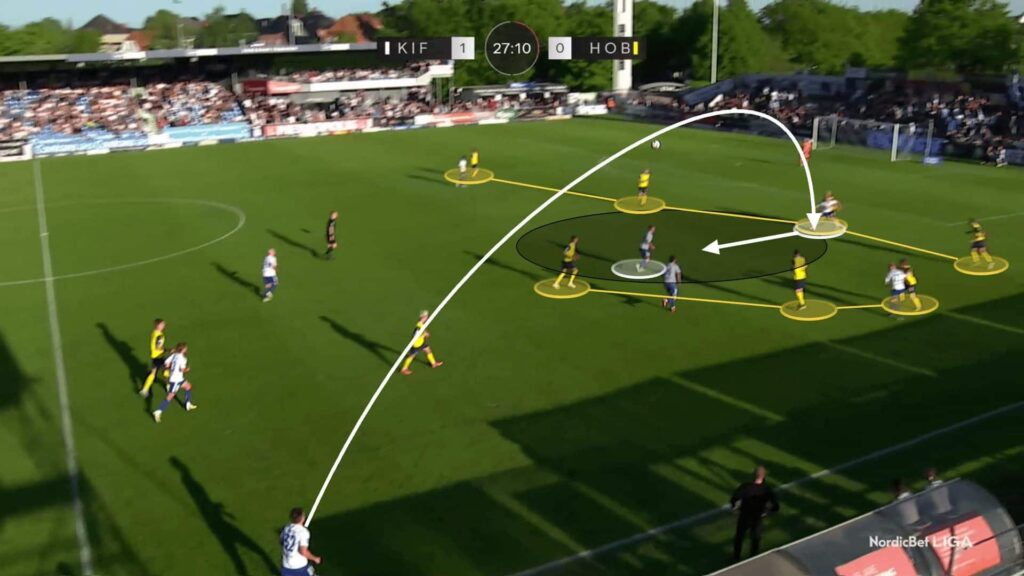In the fast-evolving tactical landscape of the Premier League, long-throw strategies have emerged as a potent weapon for teams seeking to unlock stubborn defenses. By combining precision throws with incisive back-post runs and relentless pursuit of second balls, clubs are increasingly turning set-piece opportunities into decisive moments. This article explores how Premier League sides are refining these long-throw tactics to gain a competitive edge, dissecting the key patterns and players that are transforming what was once a niche approach into a mainstream attacking threat.
Leveraging Back Post Runs to Exploit Defensive Weaknesses
When Premier League teams deploy long throws into the box, the savvy exploitation of back-post runs quickly becomes a decisive factor. Defenders often focus their attention on the near post or central areas, creating pockets of space in wider zones. Teams who master the timing and angles of their attackers sprinting to the back post can capitalize on this defensive blind spot, converting chaotic situations into goal-scoring opportunities. These runs not only stretch the defensive line horizontally but also create confusion among defenders trying to decide whether to step out or hold position, often leading to valuable second-ball chances.
Another key element is the synergy between delivery and movement; long throws are most effective when coordinated with precise back-post runs that anticipate the trajectory and bounce of the ball. Coaches emphasize rehearsed patterns where players avoid congestion, instead exploiting the full width of the penalty area. The following table summarizes how back-post runs influence team success rates from long throws across recent Premier League seasons:
| Season | Successful Back-Post Goals | Conversion Rate (%) | Notable Teams |
|---|---|---|---|
| 2021-22 | 18 | 28% | West Ham, Burnley |
| 2022-23 | 22 | 33% | Newcastle, Southampton |
| 2023-24 | 25 | 37% | Brighton, Crystal Palace |
- Spatial awareness is essential for attackers making these runs, enabling them to find pockets of space unnoticed.
- Decisive second-ball collection after the initial aerial contest often leads to quick shots or knock-ons, maximizing scoring threats.
- Effective communication between throwers and runners ensures timing aligns perfectly with ball delivery.
Mastering Second Ball Strategies for Sustained Attacking Pressure
In high-stakes Premier League matches, mastering the art of second ball dominance after a long throw-in can drastically shift momentum. Teams keenly position their forwards and midfielders for aggressive back-post runs, anticipating knockdowns or clearances to quickly regain possession. This coordinated movement doesn’t just rely on physicality but precise timing and spatial awareness, often forcing defenses into hurried mistakes. When executed well, these strategies create sustained attacking pressure that disrupts the opposition’s rhythm and opens up scoring avenues from seemingly innocuous set-piece situations.
Key elements that contribute to successful second ball play include:
- Targeted positioning: Attackers crowding the far post stretch defenses thin, providing options for immediate rebounds.
- Midfield anticipation: Players ready to pounce on loose balls just outside the box, turning defense into attack in seconds.
- Physical contest: Winning aerial duels and quick second-ball wins to maintain pressure.
| Team | Long Throws per Match | Second Ball Win % | Goals from Second Ball |
|---|---|---|---|
| Leeds United | 8.4 | 65% | 5 |
| West Ham United | 7.2 | 62% | 4 |
| Wolverhampton Wanderers | 6.9 | 59% | 3 |
Tactical Adjustments Coaches Can Implement to Maximize Long Throw Success
Maximizing the effectiveness of long throws hinges on subtle yet impactful tactical tweaks that coaches embed into their team’s setup and during match day. First, teams often reinforce their back-post presence by deploying taller or physically imposing players in these zones, aimed at capitalizing on flick-ons or contested balls. This spatial adjustment forces defenders into reactive positions, increasing the likelihood of winning second balls. Concurrently, coaches encourage midfielders to position themselves strategically around the edge of the box, ready to pounce on cleared or spilled balls-a critical pivot that turns defensive scenarios into swift offensive counters.
To fine-tune these dynamics, communication and anticipation drills become a staple in training, emphasizing synchronized runs and timing. Coaches also instruct throwers to vary their delivery speed and trajectory, switching between direct crosses and softer arcs to disrupt defensive rhythms. Below is a simplified overview of the typical roles assigned during long-throw setups:
| Role | Position | Primary Task |
|---|---|---|
| Long Throw Specialist | Sideline | Deliver targeted, penetrative throws |
| Back-Post Target | Far post | Win aerial duels and flick-on balls |
| Second Ball Hunter | Edge of box | Recover loose balls and initiate attacks |
| Distractors | Penalty area | Create space by engaging defenders |
The Conclusion
As Premier League teams continue to refine their attacking strategies, the effectiveness of long-throw tactics-leveraging precise back-post runs and capitalizing on second-ball opportunities-remains a compelling element in the modern game. By combining physicality with tactical discipline, clubs are turning what was once a set-piece annoyance into a potent weapon that can unlock stubborn defenses. As the season progresses, observers will be watching closely to see which teams best exploit these nuances to gain a critical edge in one of the world’s most competitive leagues.





